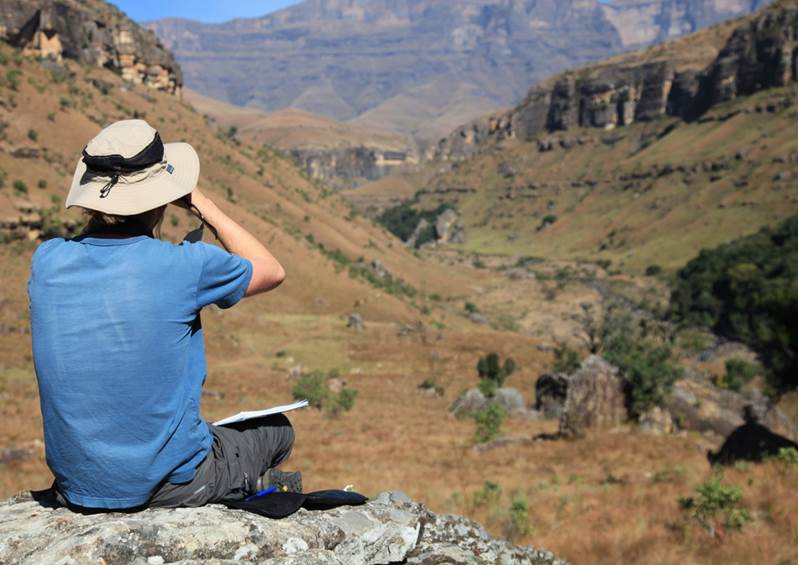Drakensberg Mini-Symposium


Daniel Poultney takes a closer look at one of his repeat photo sites. His honours project with the PCU in 2014 measured changes in the abundance of Protea caffra in the Drakensberg by comparing historical photographs with current day repeat photographs (Photo: S. Jack).
In October, two PCU members, Abraham Dabengwa and Sam Jack, attended a mini-symposium in Pietermaritzburg focusing on research conducted in the Ukhahlamba Drakensberg Park World Heritage Site. The symposium was organised by the Grasslands, Forest and Wetlands Node of the South African Environmental Observation Network (SAEON) and had invited speakers from across the country covering several disciplines.
The aims of the symposium were 1) to bring together and share knowledge between researchers working within the Ukhahlamba Drakensberg Park and 2) to showcase the progress that SAEON have made in resurrecting (and adding to) the long-term monitoring instrument array at Cathedral Peak. Talks covered a wide range of topics from vegetation ecology to hydrological and vegetation modelling, to water chemistry, soil erosion and citizen science programs.
Sam’s talk was a report on the work that Daniel Poultney carried out in 2014 for his honours thesis which looked at changes in the abundance of Protea caffra in the Drakensberg as a result of land use and climate change. Abraham’s presentation was on his PhD work which explores the use of palaeoecological proxies along altitude, rainfall and herbivore gradients in the KwaZulu-Natal Province and was titled 'Re-evaluating the use of critical thresholds in ecosystem management: Lessons from multiple and asynchronous ecological regime shifts from a palaeoecological record. Both Abraham and Sam enjoyed the opportunity to share the work being done in the Plant Conservation Unit, receive valuable feedback and network with other researchers working in the area.
Article by Sam Jack
